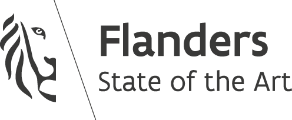Program – Händel, Chandos Anthems
Content:
Instrumentation
8 singers (SSAATTBB), oboe, 2 violins, viola, cello, bassoon & claviorganum / harpsichord & orgel
Program
Georg Friedrich Händel (1685-1759)
Chandos Anthem 10, HWV 255
Organ concerto “The Cuckoo and the Nightingale”, HWV 295
– pause –
Sonata for oboe & basso continuo in F, HWV 363a
Adagio
Sonata for 2 violins & basso continuo in F, HWV 392
Allegro, Adagio (mouvements 2 & 3)
Water Music, HWV 348 en HWV 350
Bourree, Rigaudon, Bourree
Chandos Anthem 6, HWV 251b
Note: Concerning the instrumental pieces, we have different versions of the program.
Program text
When Georg Friedrich Haendel settled in London in 1713 after a three-year stay in Italy and a brief period as Kapellmeister in Hanover, his main interest was in Italian opera. He soon established himself as the most important composer active in London. This resulted in him receiving commissions from a variety of quarters including the royal court and prominent noblemen, many of whom also maintained a bevy of excellent musicians in their luxurious country houses. One such nobleman was Lord Henry James Bridges for whom Haendel, between 1717 and 1719, wrote eleven English anthems for liturgical services known as the ‘Chandos Anthems’ (after the noble title ‘Duke of Chandos’ which Bridges, albeit only later, acquired). With these compositions based on psalm texts, Haendel made an essential contribution to Anglican church music. Lyrical or dramatic arias alternate with intimate or brilliant choruses, depending on the content of the text. Thus the exuberant hymn of praise to the Creator The Lord is my light (HWV 255) contrasts sharply with the subdued supplication As pants the hart for cooling streams (HWV 251b). Here Haendel could draw in abundance from his experience as an opera composer.
When Haendel turned increasingly to the English oratorio from the 1730s onward, he invented an attractive novelty: performing an organ concerto during intermission. These were usually charming works, such as the infectious organ concerto HWV 295 from April 1739 known as ‘The Cuckoo and the Nightingale’ in which he evoked a spring atmosphere with imitations of bird sounds.
The influence of the Italian violin virtuoso Arcangelo Corelli, with whom he had collaborated in Rome, is abundantly evident in his solo sonata for oboe (HWV 363a) and the trio sonata for two violins and basso continuo (HWV 392). Refined lyricism in the slow movements laced with often daring harmonic turns (note the beautiful delayed ending of the allegro of the sonata for two violins) alternates with more complex contrapuntalism in the fast movements where the dialogue between the soloists is central. The bourrée and rigaudon dances from the well-known Water Music, inspired by French music, demonstrate that Haendel was at home in all genres.
Ignace Bossuyt
Translation: Evan Buttar


